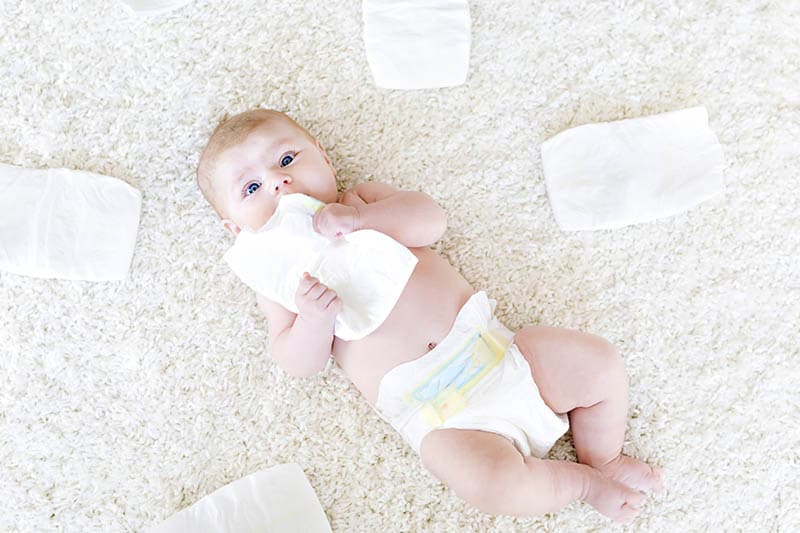When I first started my mothering journey, the first question I ever asked myself was: How many diapers do I need over the course of my baby’s first few years?
The answer was: a whole dang lot of them.
If you’re willing to get a bit more technical, the splits per size are usually as follows on average:
| Weight | Diaper size | Usage per day | Usage per month |
|---|---|---|---|
| up to 10 pounds | N | 8-12 | 240 - 360 |
| 8 - 14 pounds | 1 | 8-10 | 240 - 300 |
| 12 - 18 pounds | 2 | 8-9 | 240 - 270 |
| 16 - 28 pounds | 3 | 6-7 | 180 - 210 |
| 22 - 37 pounds | 4 | 5-7 | 150 - 210 |
| >27 pounds | 5 | 4-7 | 120 - 210 |
| >35 pounds | 6 | 4-7 | 120 - 210 |
While the number of diapers needed varies from child to child, the average for the first year can be up to a whopping 3,000 disposable diapers used.
Insane, right?
I thought so myself, but when you consider that’s over the course of a year, it averages just a bit over 8 diapers a day, which makes it seem a bit more reasonable.
But, it’s crazy just how fast that number can pile up.
With some basic math, the average annual cost of diapers alone ends up being around $800.
And that’s just the diapers – it doesn’t include other baby gear like talcum powder, baby wipes, baby formula, baby bottles, pacifiers, and all the other paraphernalia.
The average cost of having a baby certainly is something to think about.
Diapers are an expensive endeavor to be sure, but not one that’s impossible to trim some edges off of, and I’m here to show you just how that can be done.
Disposable Diapers Or Cloth Diapers?
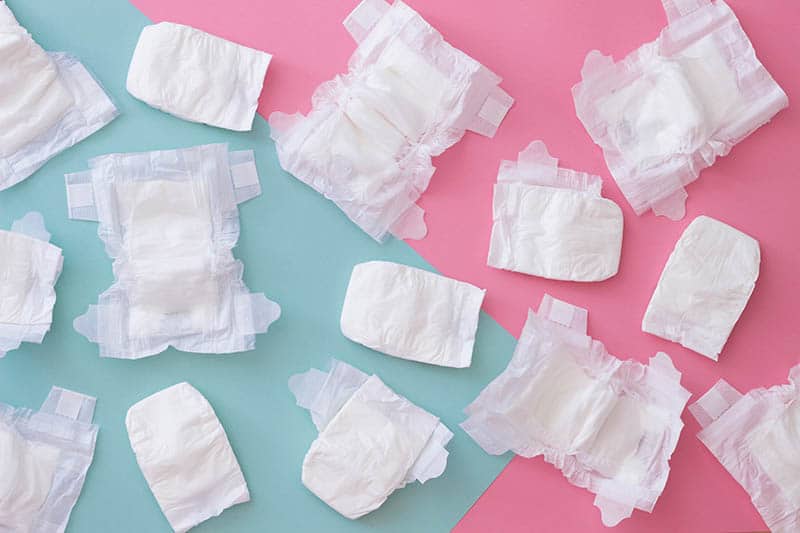
Before I start going through the list of all the things we can do to cut costs on disposable diapers, you might want to consider going the cloth route.
While a bit more expensive on the down payment, cloth diapers won’t need any extra maintenance fees unless you somehow manage to lose or rip all of them.
Compared to the disposables’ exorbitant amount of 3,000 a year, in the case of cloth diapers, you’ll only ever need around 20 total, give or take a few depending on how comfortable you feel with your current number.
And yes, I’m not exaggerating, only around 20 or so. Why? Because they’re completely washable and reusable.
And not only that, you’ll most definitely save a lot of money using them, as the average cost of 20 diapers, while varying wildly depending on the manufacturer, is extremely low compared to the $800 of the disposables.
Plus, you won’t have to worry about which size you’re going to get them in as they’re a sort of “one size fits all” kind of deal.
One thing to note though is that you should be careful how many of them you put to wash in one go. You want to have at least 3-4 pairs available to you at any given time just in case of emergency diaper changes.
While the lower price and sizing do raise a valid point toward getting cloth diapers, they aren’t without their downsides.
Money-wise, it’s not just their purchase price that has to be considered, but also the number of extra washes that you have to do now.
That has to account for the added water and electricity bill atop of that, which, while still lower than the cost of disposable diapers, can close that gap quickly.
The other issue is that they can get somewhat uncomfortable due to their lack of absorbency, a price we pay for a lower budget.
Because of that, cloth diapers have a greater risk of potential blowouts and are more prone to causing diaper rashes than disposables are due to hygienic reasons.
And the final factor you have to account for is time.
All of that cleaning up and loading up another load of laundry, as well as folding the diapers yourself instead of just sliding them on, adds up to quite a bit of lost time.
If you’re someone who’s already going around with a packed schedule, this might put a bit too much on our plate at once and you’ll find yourself overwhelmed.
It’s a mistake most new parents tend to do because they start off full of enthusiasm, believing they can handle everything, only to find themselves buried in a mountain of soiled and wet diapers.
As you can see, there are some great benefits to going fully down the cloth diapering road and ditching the disposable newborn diapers, but there are some valid drawbacks as well.
It’s up to you to decide which is better or if you want to dip into both at the same time.
Some parents have started doing this, mostly for the first month of a baby’s life or so, finding the disposable diaper a better choice during the period when the baby’s bowel movements tend to be a lot more active.
This way they get to hopefully avoid those nasty diaper rashes with their little one initially and then swap later once it all calms down a bit.
Why Do Parents Need To Go Through That Many Diapers Daily?
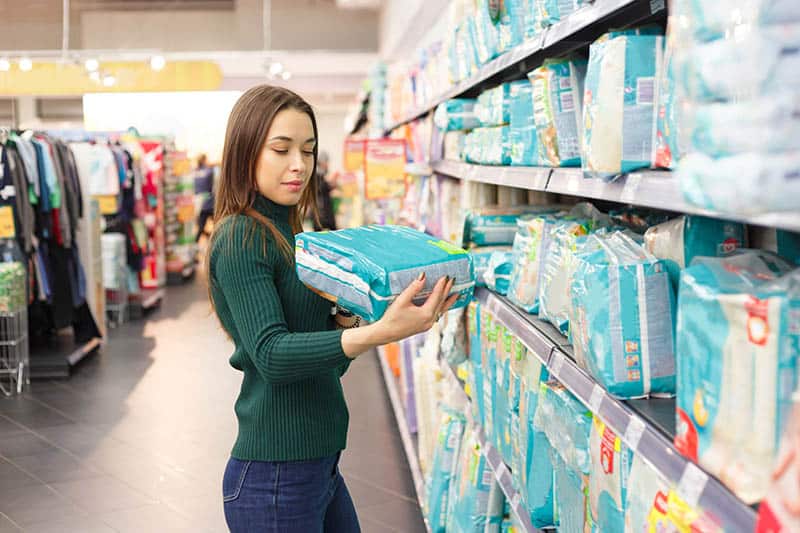
Kids can be messy downstairs, especially newborns and, until they get some potty training done, that will always end up being the case.
They have no control of their bowel movements and bladder, so you’re there to make sure that doesn’t become an issue and that they’re always kept comfortable. You’re their parent after all.
Now, the average baby tends to go rather often, every 2-3 hours or so.
You may think that that would only go through 16 of the 24 hours of the day (forgetting about nighttime changes), but with newborn babies, that most definitely isn’t the case.
You’ll be doing the full 24 and good luck if you manage to get some proper sleep in – I’ll most certainly commend you for it – but be ready for many sleep-deprived nights.
Of course, the number of diapers needed daily is going to go down as your little one grows up and eventually gets potty trained and, because you’ll start losing less and less sleep.
How To Know Which Diapers Are The Right Fit For My Baby?
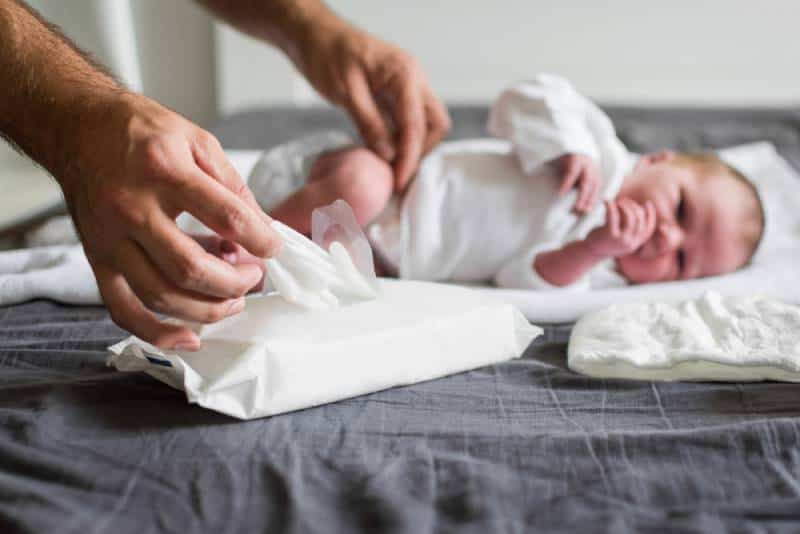
This was one of the first questions I asked myself after wondering how many diapers do I need for a newborn.
There are many factors that go into knowing what size diaper fits your baby and what diaper he will be most comfortable wearing.
A baby’s weight is one such factor (make sure to track it with a baby scale), where having a durable diaper will definitely help out quite a bit if you have a heavier baby so the diaper doesn’t tear.
In the same vein, having a fit baby who likes exploring and moving around a lot might mean that your child will prefer a diaper that he barely feels is there in the first place and doesn’t impede on his ventures.
The absorbency of the diaper also plays a major factor that contributes to comfort.
If your little one has to be wasting more of their time sitting through diaper changes than exploring his surroundings at later stages of their first few years, they might end up being a lot crankier than normal.
The material is a big factor – not just in the comfort of your child, but his overall health.
You may not have known this, but many products in the early 90s and before, especially baby products, were manufactured using many harmful and downright toxic chemicals.
Bleach or chlorine were and still are used to treat diapers to give them that pure white color that we’re all accustomed to seeing, some unhealthy chemical compounds to make the diaper stretchier, and the like.
Not to mention the BPAs, the parabens, and the phthalates that used to riddle diapers, which have turned out to be leading causes of allergies or problems that develop later in a child’s life.
Some of them are still utilized in some baby diaper brands and I suggest looking at the labels a bit closer when you’re in the market for some new diapers.
Speaking of material though, it depends on if you want to go organic or not.
Most regular disposable diapers use a cotton blend for theirs, while the organic ones tend to favor wood pulp and bamboo as their absorbent material of choice.
Either works just as fine and you wouldn’t be shunned for your choice – definitely not here.
I’ve been known to mix and match simply because I was running short on organic diapers and the product was out of stock when I wanted to order more of it.
A Few Tips For Optimizing Baby Diaper Use
1. Don’t keep too big of a diaper stockpile
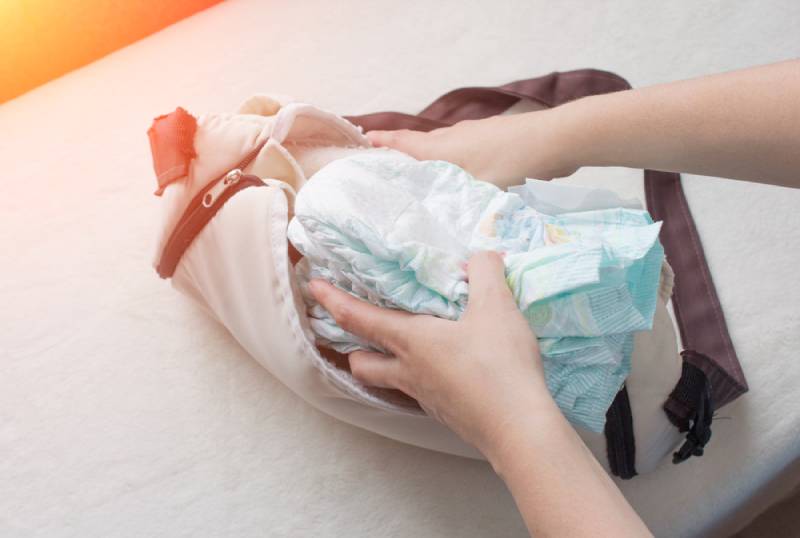
The biggest mistake new parents make when buying disposable diapers is that they over-prepare – in a bad way.
Stockpiling baby diapers is a huge mistake, one that might end up costing you a fair bit of money once you realize that your child is going to be growing very quickly throughout the first year.
There’s a reason there are 7 different sizes for kids and all parents should take that into account when purchasing diapers.
A newborn size diaper certainly isn’t the same as a size 4 one.
Sadly, you can’t just get all of the shopping done in one go because nobody can predict how quickly your child is going to size up, and trying to predict it is only going to result in a bunch of unused diapers.
RELATED: Do Diapers Expire At Any Point And What Happens If They Do?
At least you can donate them to someone who really needs them, or use your unopened packages as a perfect baby shower or gender reveal gifts. Just don’t let it happen to you too often or you’ll regret it.
If you still want to stash baby diapers, I’d say that you should stick to stockpiling one or two different sizes.
Around 15-25 packs should do the trick, but preferably 20 to stay on the dot. Size 3 is usually the biggest offender apart from the newborn baby period as far as diaper usage is concerned.
2. Experiment until you find the ones that fit best
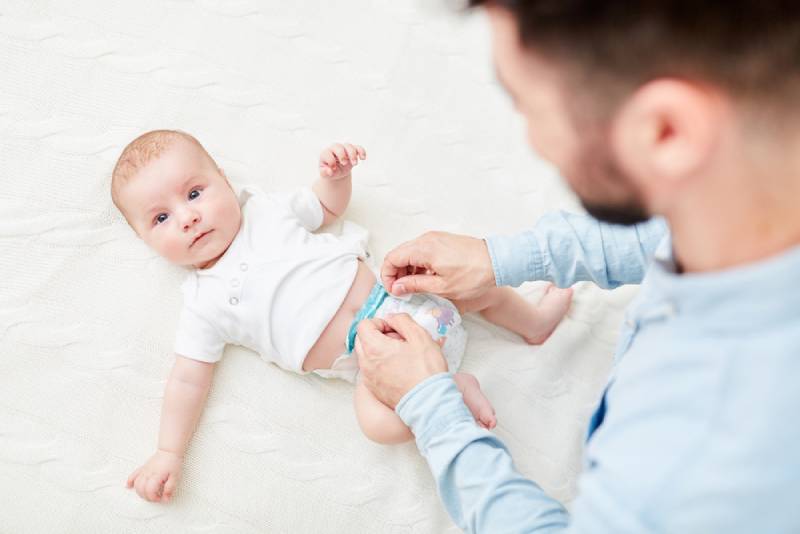
Another reason why you might not want to stockpile too many diapers at once is because you should test a few different brands of diapers out first before taking that step.
While you may go for the most premium diaper brand out there, chances are your child may disagree with the choice and want something else.
It can be a nasty wake-up call especially when you realize how uncomfortable the diaper you decided to buy actually was.
Try going through a few different ones at first until you finally come to the right diaper brand and stick to it. Better to have your little ones get used to one and not swap unless necessary.
Some of the better examples, both price and quality-wise, are Pampers Swaddlers and Cruisers, as well as Huggies.
RELATED:
- Huggies Vs Pampers: Which Diapers Are The Best?
- Pampers Swaddlers Vs Baby Dry Diapers: Which One Is Better?
- Pampers Cruisers Vs Swaddlers: Which Diaper Is Better?
If you’re more of an eco-conscious parent, my personal suggestion would be either Andy Pandy organic diapers or Bambo Nature baby’s diapers, but it all depends on your little one’s whims. You can also give bamboo diapers a try.
3. Always have enough spare diapers to cover unforeseen circumstances
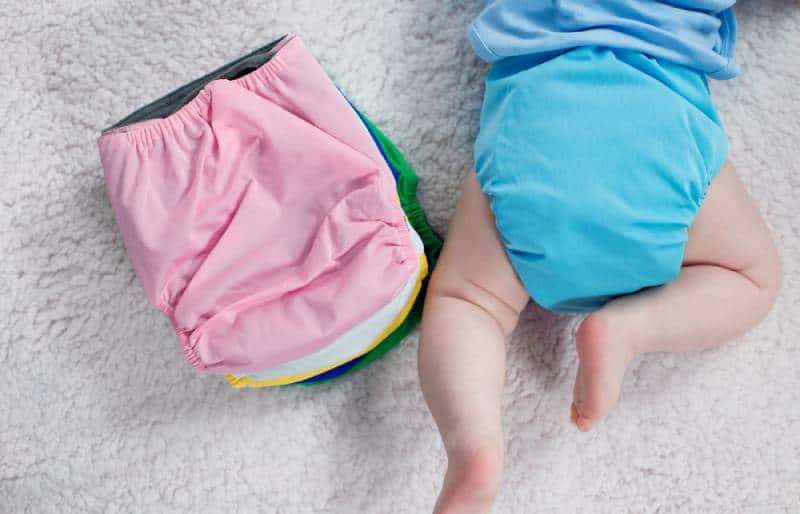
As big of a problem as overpreparing by buying a lot of diapers is, so too is the issue of not getting enough of them.
What happens if you run out of disposable diapers and your child is stuck with his poop mushing about his newly soiled diaper and you’re alone at home?
You can’t just leave your child there while you quickly hop over to the shop, nor can you bring him along out of respect for other people not having to deal with the rancid smell of baby poop.
Meanwhile, he’s just smelling up the place.
A quick solution would be to leave him naked after a cleaning, but then you risk your house becoming a real mess as your little one becomes a ticking time bomb.
No matter how you spin it, it’s a disaster.
If you leave the soiled nappy on, your child is just going to end up getting a rash, and if you remove it, you’ll risk the further spread of said fluids around the house.
That’s why it’s wise to always have at least one spare pack of diapers at the ready should things go south, and make sure to check your stockpile often to avoid this potential scenario.
4. When trying to size up, always go for the bigger diaper size
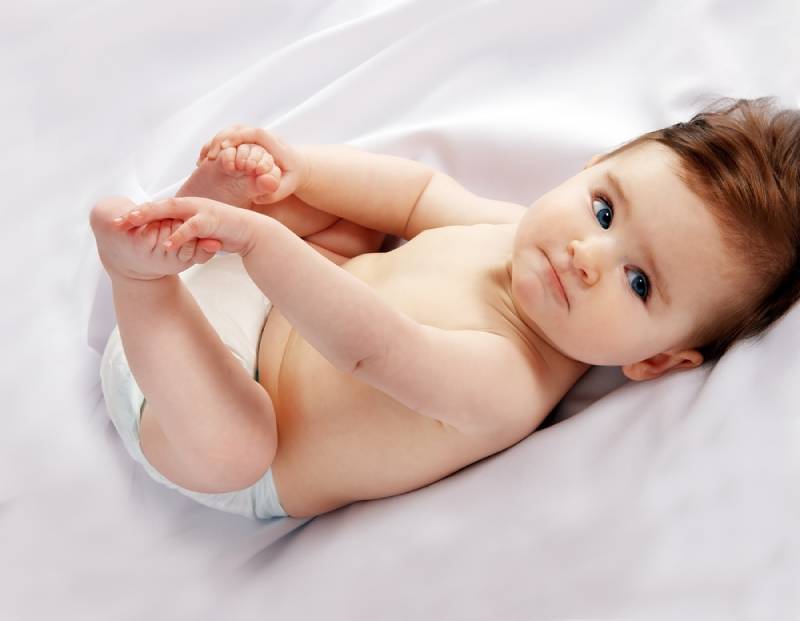
It’s much easier to tighten the elastic waistband of a bigger diaper than it is to loosen the sealed leg holes of a smaller one.
The bigger one always tends to be more comfortable, albeit a bit roomier in places, but the bigger sizes also mean fewer problems with mobility.
The issue with keeping to the smaller size for longer when your baby is constantly growing is that it just becomes too tight, especially the elastic rings that go around either the waist or legs.
It’s easy to notice when your growing baby boy has outgrown his current diaper when you see signs of irritated skin or skin that has imprints of the elastic left on it.
Another issue that may pop up from diapers that are a bit too small is that they don’t cover the entirety of your child’s rear end, resulting in potentially very nasty blowouts.
That’s something no parent wants to deal with!
Blowouts aren’t the only issue though.
As your child grows, so does his bladder capacity, and you may wind up with a lot of wet and leaking diapers if they’re unable to contain the volume that he produces.
If that’s the case, your child is definitely long overdue an upgrade in his toddler attire. Doing so will end up saving you some money and effort by swapping your orders to the bigger size.
5. Save money by looking for discounts wherever they may be
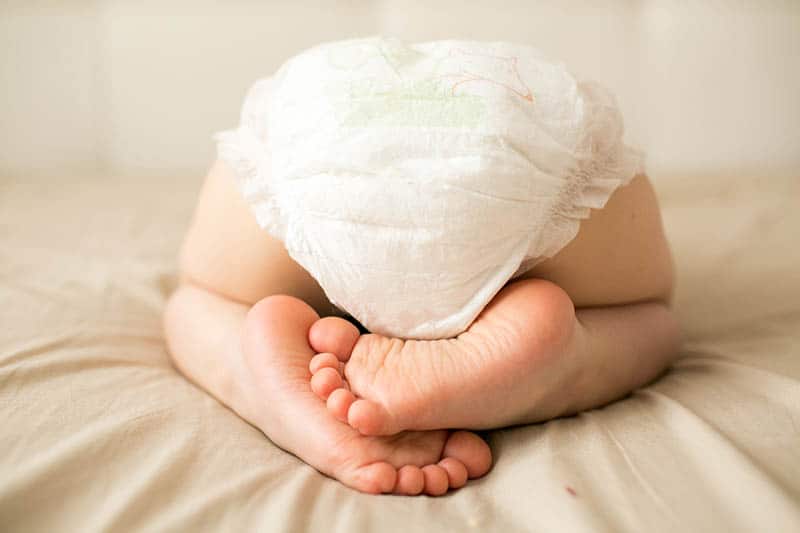
The most obvious trick in the book when looking at saving money is to either tighten your family budget or look for deals (or both).
Coupons are the most obvious choice for the matter and couponing is a time-honored tradition of any budget-conscious mother.
While some may think it undignified, not every mamma has the luxury of buying everything full price so we have to deal with bargain hunting.
There’s absolutely nothing wrong with that. After all, coupons are there to be spent, not thrown away.
If you’re shopping online, especially on Amazon, you may have noticed that many baby product brands have a “Subscribe & Save” option next to them.
Those are usually packed with great offers and reward programs as long as you remain a loyal customer.
Some of these diaper brands even have their own separate loyalty program that you can also opt into alongside the Amazon one and get an even better deal for your item of choice.
A small price to pay and an easier method to keep yourself stocked up on diapers than by just wasting space in your house by buying too many of them at any given point.
If you can help it, always buy when there’s a sale going on during special periods like Black Friday, Christmas, summer sales, and the like.
It’s when you’re bound to be getting better deals for baby products in general, so it wouldn’t hurt to stock up during said promotions just in case.
Even if you do end up overbuying, it won’t be by much if you’ve figured your own system out already.
And, if you’re low on cash or simply do not have the income to cover some of your child’s vast expenses, you can always go ahead and contact the National Diaper Bank for aid or any other local humanitarian non-profit organization that benefits mothers.
It’s not shameful to admit that we all need help sometimes, and that’s what the organization is here for in the first place.
If you ever find yourself with an excess of baby diapers, I’d suggest that the best way of getting rid of them if nobody in your immediate vicinity needs them is to donate to the National Diaper Bank.
You’re bound to make one mother’s life a whole lot better.
In Conclusion
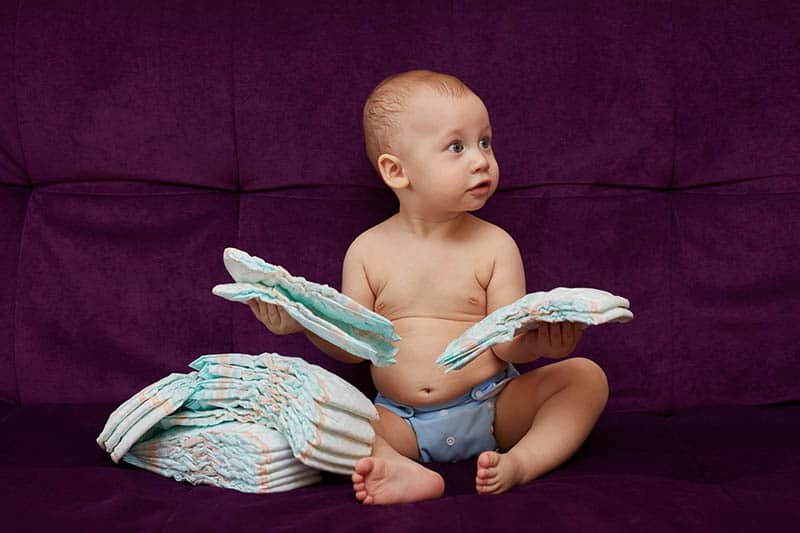
The question of How many diapers do I need? doesn’t have a concretely correct answer.
Some kids may have more control over their bladder and their bowel movements than others, requiring the use of fewer diapers than average, while others may require more.
It varies from child to child, though it usually settles around the 3,000 per year mark without it being an even spread throughout the child’s growth periods.
Some sizes will require as little as 14 packs, while some might go so far as to require double that amount.
There’s never a certainty with these things and the best thing you can do is try your best to prepare for a baby financially, stay on your toes, and adapt to your child’s needs.
When starting off, buy a pack of a few different diapers to test them out.
While they might not end up varying too much for you, it will help you see which set of diapers fits your child best, after which you can eliminate the others and stick to that one set.
You’ll end up with a lot less mess and fuss over your little one crying due to diaper discomfort, plus you’ll manage to score yourself some of those precious extra minutes of peace and quiet.
It most certainly isn’t an easy task, but mothering never really was.
That’s why it’s so rewarding whenever we mammas manage to overcome a hurdle during this period with our loving kids. Just keep on persevering and powering through this and you’ll soon be reaping the fruits of your devoted labor.
If anything remains unclear or you have any questions about this or any other topic related to motherhood, feel free to give me a shout and I’ll do my best to answer it.
READ NEXT:
- How Often Do Newborns Poop? All Your Questions Answered
- The Best Diaper Bag For Twins – 12 Top Choices
Like this post? Please share or pin it for later. You can also stay in the loop and follow us on Facebook, Instagram and Pinterest.
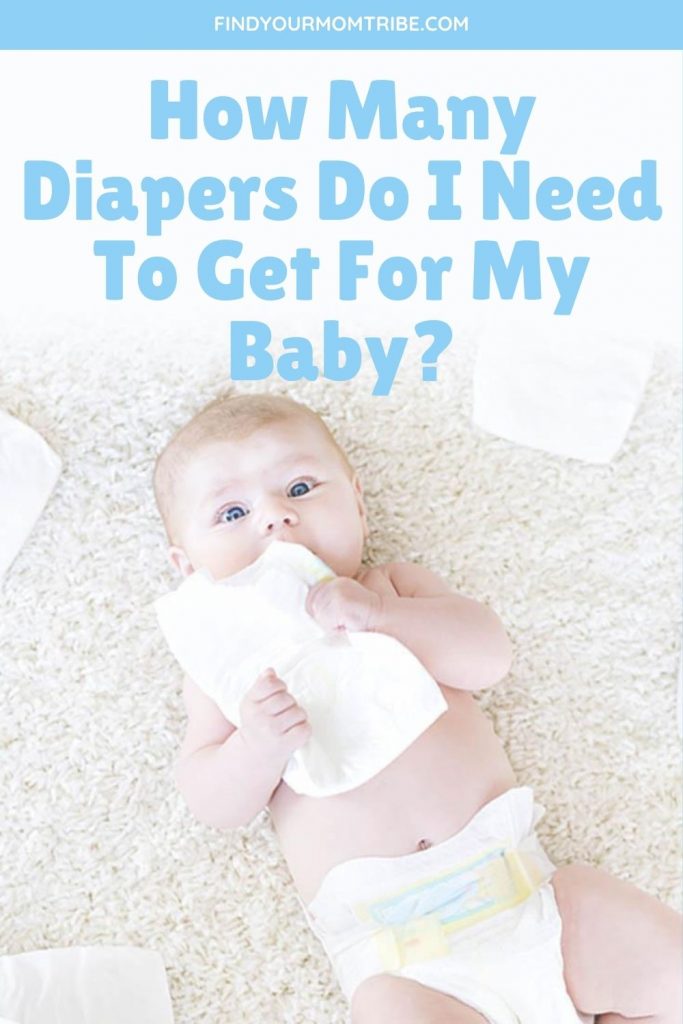
This post contains affiliate links. Please see our full disclosure or more info.

